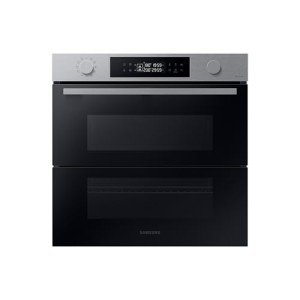The Rise of Integrated Electric Ovens: Redefining Kitchen Efficiency and Style
In the ever-evolving landscape of kitchen area appliances, the integrated electric oven has become a game-changer. As consumers increasingly look for smooth styles that boost both performance and visual appeal, integrated electric ovens are acquiring traction. This short article checks out the features, benefits, and design considerations related to integrated electric ovens, making them a worthwhile financial investment for modern homes.
What is an Integrated Electric Oven?
An integrated electric oven is created to mix easily into kitchen area cabinets, providing a streamlined appearance that makes the most of area and improves the overall design of the kitchen area. Unlike standalone ovens, which can occupy important flooring space and develop a disjointed appearance, integrated models are built into the kitchen cabinetry, offering a cohesive and modern aesthetic.
These ovens are available in various sizes and configurations, consisting of single, double, and multi-function styles, catering to various cooking needs and kitchen designs. With alternatives for both conventional and convection cooking, in addition to included functions like steam cooking, these ovens make meal preparation more versatile and effective.
Advantages of Integrated Electric Ovens
1. Space Efficiency
One of the most considerable benefits of integrated electric ovens is their ability to save area. By fitting into kitchen cabinetry, they maximize countertop space and can even produce an impression of a larger kitchen area. This is particularly useful for smaller kitchen areas where every square inch counts.
2. Visual Appeal
Integrated electric ovens offer a smooth and contemporary look. They get rid of the gap often seen with standalone appliances, producing a combined appearance that can raise the general design of the cooking area. integrated oven and grill provide personalized surfaces and paneling options, allowing homeowners to pick styles that match or match their cabinetry.
3. Improved Functionality
Integrated electric ovens often include advanced functions that enhance cooking performance. With alternatives such as self-cleaning, smart cooking programs, and exact temperature level controls, they cater to the requirements of both amateur cooks and cooking lovers. Lots of models now also incorporate clever technology, making it possible for users to manage their ovens remotely via mobile phone apps.

4. Improved Energy Efficiency
Integrated electric ovens generally boast much better energy efficiency compared to older standalone models. A lot of them are developed with improved insulation, ensuring heat retention and reducing energy usage. Additionally, the incorporation of convection cooking innovation enables for quicker cooking times with lower energy use.
5. Versatile Cooking Options
Modern integrated electric ovens come geared up with a wide range of cooking modes, consisting of baking, broiling, roasting, and steaming. This versatility empowers users to try out different cooking methods, adapting to different dishes and dietary requirements. For those who love to amuse, functions like several cooking racks enable preparing several meals concurrently.
integrated ovens
When going with an integrated electric oven, several essential factors should be considered:
1. Size and Fit
Before purchasing, it's vital to measure the kitchen area precisely. Integrated ovens can be found in basic sizes that fit within common cabinet measurements, however validating the measurements makes sure a perfect fit. In addition, consider the door swing and ease of access of controls when choosing the placement.
2. Ventilation
Appropriate ventilation is necessary for any kitchen device, particularly when cooking at high temperatures. Integrated ovens ought to be installed in a manner that cultivates airflow and avoids heat accumulation. Depending upon the design of the cooking area, it may be needed to incorporate additional ventilation services.
3. Power Connection
Considering that integrated electric ovens need a particular power connection, it is vital to speak with a qualified electrician before setup. Making sure that the wiring meets the oven's requirements will avoid potential dangers and ensure optimum efficiency.
4. Design and Finish
Selecting the ideal style and finish to match the kitchen design is important. From stainless-steel to custom cabinetry panels, integrated electric ovens can be customized to fit various aesthetics, guaranteeing that they enhance the cooking area's general visual appeal.
Conclusion
Integrated electric ovens represent a mix of modern-day technology and design resourcefulness, supplying an effective and stylish service for modern kitchen areas. As homeowners focus on both performance and looks in their cooking spaces, these ovens stand apart as a compelling option. Purchasing an integrated electric oven not only enhances cooking capabilities but likewise changes the kitchen area into a sophisticated and harmonious environment where culinary creativity can flourish. Whether you're a busy family or a culinary lover, the integration of these versatile devices can substantially raise your cooking experience.
